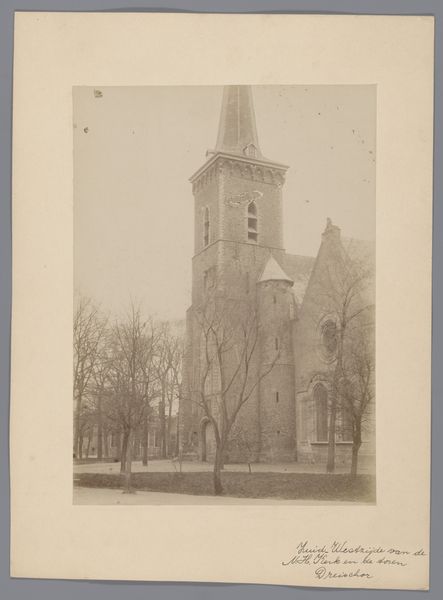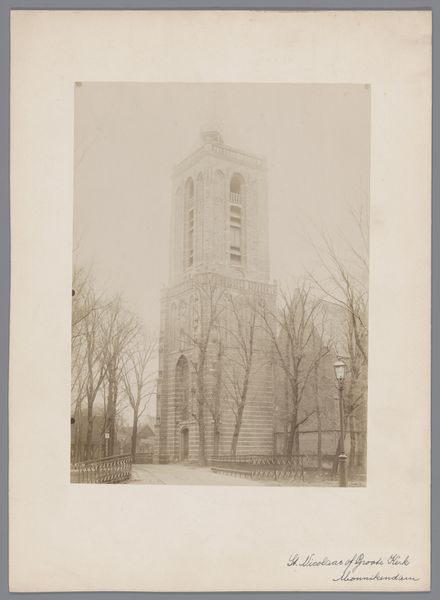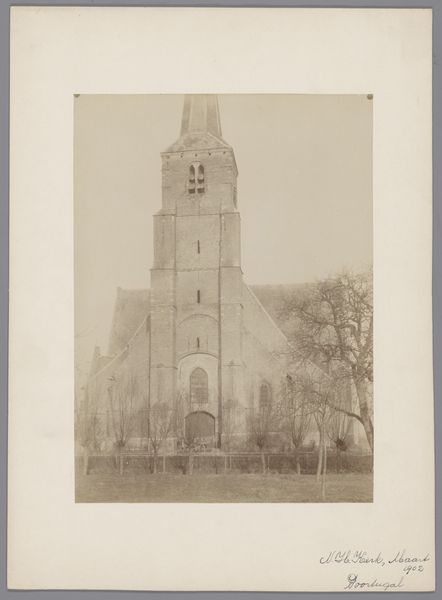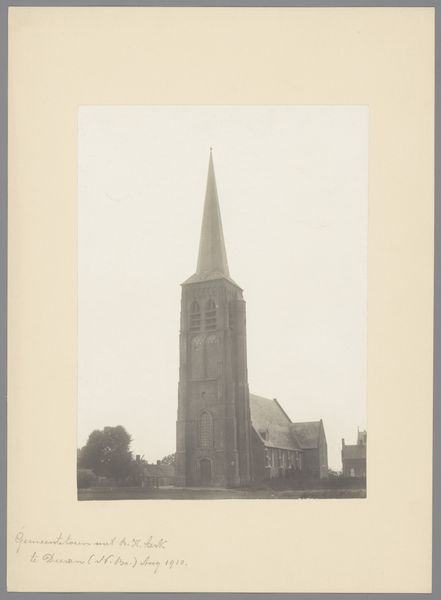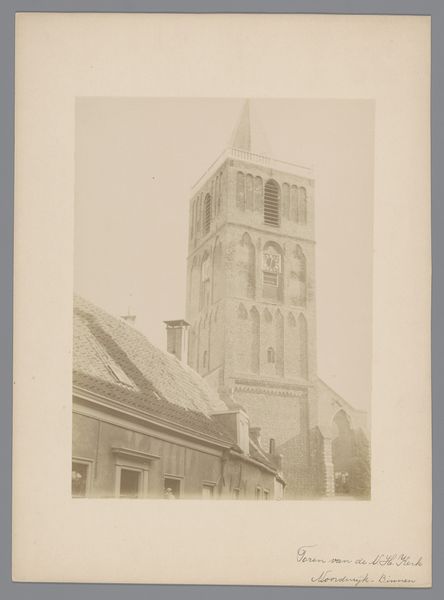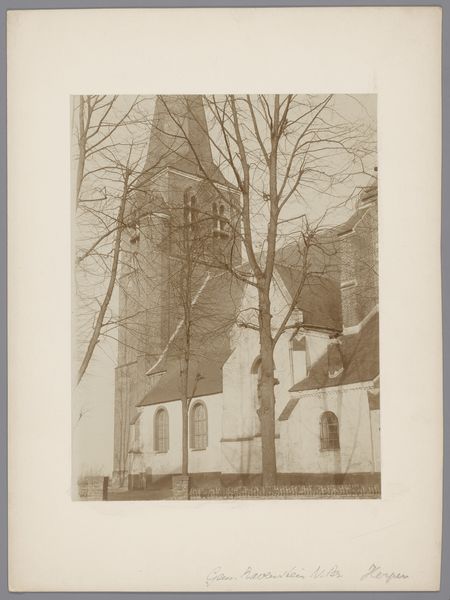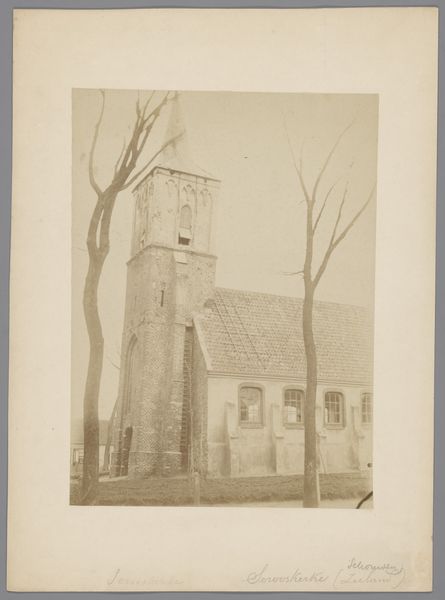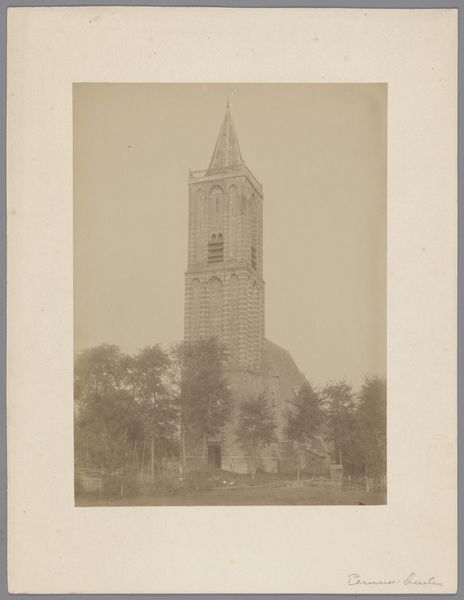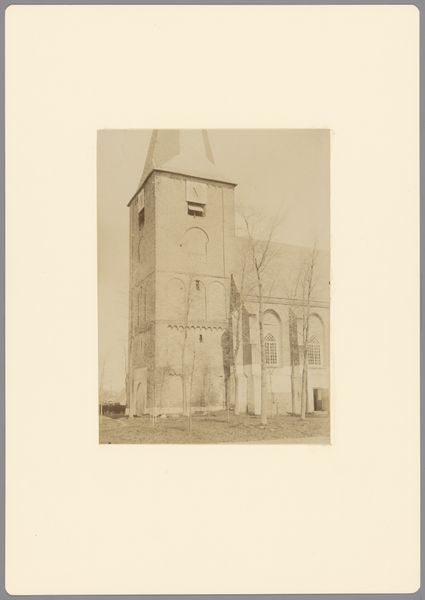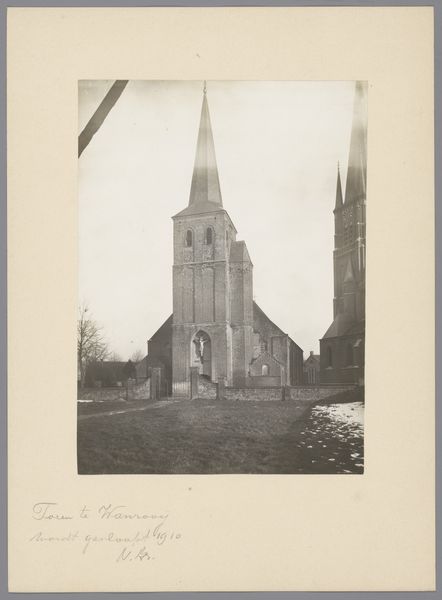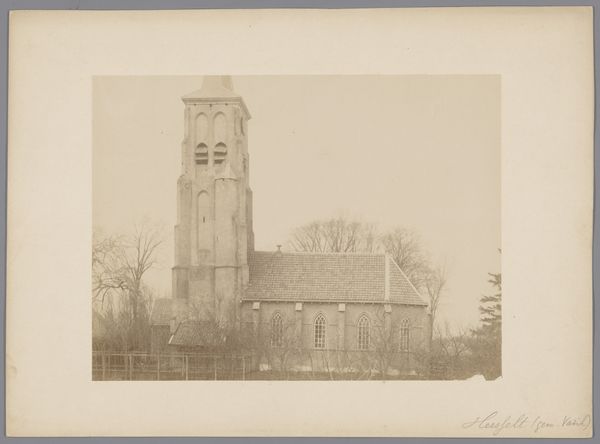
Dimensions: height 231 mm, width 171 mm
Copyright: Rijks Museum: Open Domain
Editor: So this is "Toren van de Pauluskerk te Baarn," or Tower of the Paul’s Church in Baarn. It was taken sometime between 1890 and 1920 by an anonymous photographer, as part of the Monumentenzorg, which is like the Dutch Historic Preservation. What strikes me most is how this image seems almost spectral, as if the church is fading into the mist. How do you interpret its historical context? Curator: Well, seeing as this was commissioned by Monumentenzorg, its significance shifts from the aesthetic to the archival. This image, like many commissioned then, served as a record, a cataloging of national heritage at a time when photography was becoming increasingly accessible. Editor: So, it's less about artistic expression and more about documentation? Curator: Exactly! Consider what "national heritage" even meant during this period. Who decided which structures deserved preservation, and why? Was it purely architectural merit, or were there socio-political factors at play? Churches, especially prominent ones, often symbolized community identity and power structures. Editor: That makes sense. Preserving them reinforced the status quo? Curator: Potentially. And think about the choice of photography itself. It lends an air of objectivity, of scientific accuracy. But even then, photographic choices, the framing, the light, subtly shape our perception. This misty effect could be accidental, due to the technology of the time, or it could be a deliberate artistic choice, lending a certain romanticism to the monument. Does this new perspective change your appreciation of the piece? Editor: Absolutely. It makes me think about whose stories are being told and who gets to decide what’s worth remembering. Thanks for pointing that out. Curator: It's a fascinating reminder that even seemingly neutral images carry cultural weight. Every art piece reflects its moment.
Comments
No comments
Be the first to comment and join the conversation on the ultimate creative platform.


